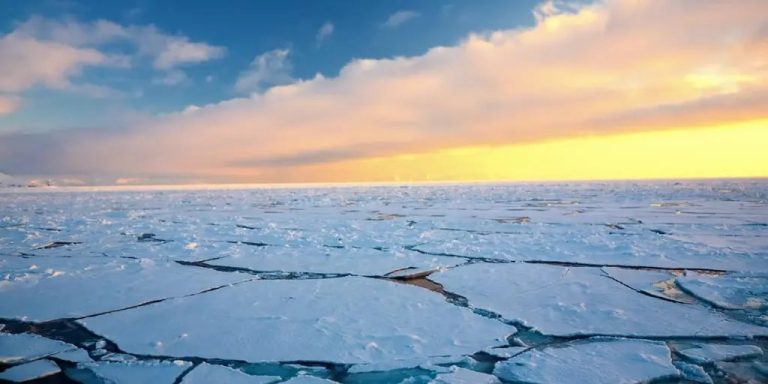From the Daily Skeptic
Chris Morrison
Ocean surface temperatures are dropping rapidly around the world, with scientists reportedly baffled by the pace of the recent decline. When the oceans “boiled” over the past two years, people were less confused. People flying to Benidorm for annual holidays and causing “global warming” are the favorite explanation, although the mainstream media explains it in slightly more polite terms. For nearly two years, this boiling ocean metaphor has been a reliable stand-in for every alarmist preaching about net-zero madness. But expect that fear to stick with coral reefs, polar bears and Arctic sea ice for a while. To be sure, no one in the mainstream media is reporting that the ocean is cooling at an alarming rate. There is little fear-mongering offered to draw attention to this disturbing news.
Until recently, the following surface sea temperature (SST) chart showing measurements from the Arctic to Antarctica was rarely seen by the public.

Compared to the sharp rise in the orange line in 2023, this year's black line shows temperatures that have remained flat until April.
In the Atlantic, the shift is even more dramatic. Temperatures have cooled rapidly since May, with temperatures in central equatorial areas 1°C cooler than average for this time of year. The National Oceanic and Atmospheric Administration pointed out that the high sea temperatures at the beginning of this year were the strongest warm events since 1982. Attractive. “Never before in the observational record has the eastern equatorial Atlantic shifted so rapidly from one extreme event to another,” NOAA observed.
It's not uncommon for water in these parts of the Atlantic to cool during the summer, as seasonal southerly winds blow surface water away from the equator, exposing deeper, cooler water. This process is called “upwelling,” but this year it coincides with a weakening of the trade winds that are supposed to cause unusual warming. “So far, these atmospheric conditions…are quite puzzling.” The National Oceanic and Atmospheric Administration said it needed to dig deeper to reveal the exact cause of this “seemingly unusual event.”
Nowadays, of course, we must welcome any outbreak of scientific headaches in normally “stable” climate affairs. Temperatures are suddenly dropping, and scientists don't seem to know why this is happening. However, temperatures rise, all due to global warming, and humanity must immediately return to pre-industrial social and economic hell. In fact, scientists know very little about how large amounts of weather suddenly change and how the oceans and atmosphere warm and cool. More than 100 supercomputer models are simply not up to the job of explaining natural variation in a chaotic, nonlinear environment. The fact that some scientists are confused when temperatures drop but are filled with fear-mongering explanations when temperatures rise says it all.
It's not just the Atlantic that's experiencing a drop in surface temperatures. In the Pacific region, there is a powerful child The natural variability that warms the oceans and affects global weather has disappeared. As the latest data from NOAA below shows, the higher sea temperature anomalies recorded last year have declined significantly. The blocks record anomalies on a rolling three-month basis, with the last number 0.2°C referring to May, June and July 2024. is due to child Nothing unusual. Shamefully, these numbers continue to be used to cause unnecessary panic and anxiety around the world. Everyone from UN Secretary-General “Global Boil” Antonio Guterres to British news climate comedy personality “Jim” Dyer should hang their heads in shame.

latest child Although the natural distortions in the Celsius anomaly record are not as large as those produced previously, they are still powerful child Around 2015-16. Over the past 25 years, all global temperature increases, except those added retroactively by state-funded compilers, have been nearly as high as child formation. 1998, 2016 and 2024 all saw strong fluctuations. child Impacts, particularly the increase in ocean temperatures that are already occurring. As with most natural changes, the process is reversing—what goes up, usually comes down.
According to NOAA, sea surface temperatures at three of four locations around the Pacific Ocean are used to determine whether child Now below the long-term trend. Temperatures have also dropped significantly in many areas of the Pacific, as low as 300 meters, as shown in the central and eastern regions of the map below.

Also, think of narrative-driven couriers such as the BBC’s Georgina Rannard. Last August, she claimed that while scientists knew oceans would continue to warm due to greenhouse gas emissions, “they were still investigating exactly why temperatures had soared so much compared to previous years.”
What a difference a few months makes to the climate alarmist industry.
Chris Morrison is daily skepticof Environment editor.
Relevant
